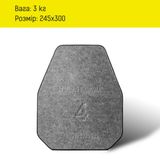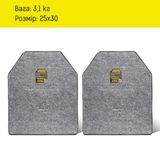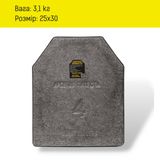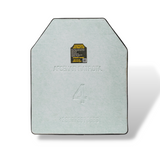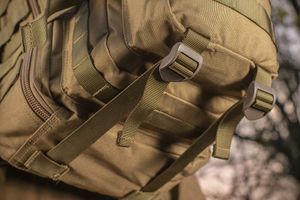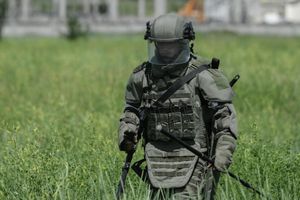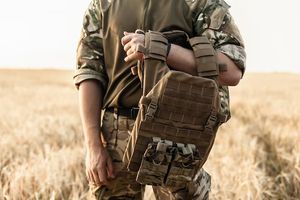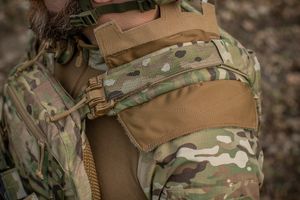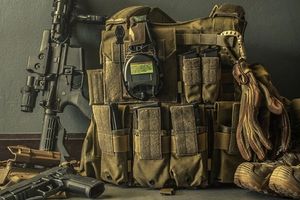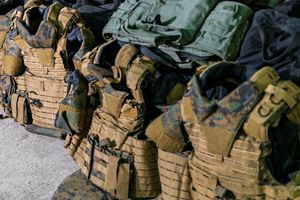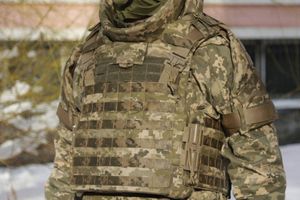Body armor is popular all over the world. Protection is needed not only by the military and law enforcement officers, but also by wealthy people and businessmen who face threats to their lives. Today there are many types of body armor, and different standards help to classify it. In Ukraine, state GOSTs and NIJ (American Institute of Justice) standards are used for this.
Today's armor is able to protect against many types of damage - knife, gunshot, debris. It wasn't always like that. Weapons have evolved over the centuries, and defense has changed with it. Today, plate carriers are popular — carriers into which plates with varying degrees of protection are inserted.
Evolution of body armor
Since the beginning of history, people have fought for land, food, religion, water, resources, power. The need for protective shields and clothing quickly became evident as the threats to life grew.
The first protective clothing and shields come from the use of animal skins by prehistoric people. Now we know that this idea was reasonable enough - until now, some of the strongest armor in the world came from nature. People have been trying for years to imitate the shape, texture, durability and strength of animal skins, shells, scales and feathers.
Ancient tribes, going hunting, tied the body with animal skin and plant materials, and the warriors of Ancient Rome and medieval Europe covered their torso with metal plates before the start of the battle. In the 1400s, armor in the Western world became very strong. With the right armor, you were almost invincible.
In order to make it easier to create protection, everything was used: from animal skins to wood. And when metal appeared, it became the main protective material. We are well aware of the knights of the Middle Ages, fully encased in steel armor. Then they also wore chain mail - a lighter and more flexible protection, which does not hinder movement and speed so much. Chain mail is in demand even now.

The invention of gunpowder led to the appearance of the first firearms, which historians call Chinese firearms (in fact, this is the first prototype of a pistol). With this in mind, firearms did not become common until gunpowder made its way to the West, leading to the development of the musket in the 16th century. Since then, firearms have become more advanced and deadly than ever. This has rendered most traditional security solutions ineffective. The cartridges easily pierced thin steel.
During the First World War, different countries created clothing that would protect against fragments of grenades and shells. For this, different types of metal were used. World War II demanded the next generation of ballistic vests. Protective nylon appeared. While this form of armor offered protection from shrapnel, body armor offered no protection against most threats: handguns and rifles. The weight and volume of the armor also greatly interfered with mobility.
In 1960, the US National Institute of Justice (NIJ) initiated a research program to develop lightweight body armor that could be worn by law enforcement officers. During the research and development stages, new fibers were woven into a lightweight fabric with outstanding ballistic resistance. Thanks to the work of the NIJ, the current generation of body armor has become a reality. During this time, the NIJ began to establish performance standards, defining the ballistic resistance requirements for body armor worn by law enforcement.
In 1965, DuPont chemist Stephanie Kwolek invented Kevlar, a ballistically resistant fiber that was originally intended to replace steel cord in vehicle tires. Her invention ushered in the modern era of ballistically resistant armor and saved thousands of lives. Since then, many other fibers have been invented to stop various threats, but Kevlar remains one of the best materials for lightweight body armor today.
Today we know that the variety of weapons and ballistic threat levels change dramatically over time - no single technology is guaranteed to be resilient to the threats of tomorrow. This walk through history shows that researchers continue to innovate and push the boundaries of ballistic technology to provide protection against new threats.
General characteristics of protective body armor
Today, there are many types of vests with different levels of protection. In addition to the protection class, there are many other characteristics that affect operation:
- Size. Vests come in different sizes so that everyone can find their protection - from fragile girls to big fighters.
- Type. Concealed vests can be hidden under clothing, while open vests allow you to place results for weapons or ammunition. There are also plate carriers with pockets for armor plates, full ballistic vests.
- Destination. Military vests are usually open wear, have a camouflage pattern. Law enforcement officers often wear plain open vests. Civilians and undercover agents are more likely to choose stealth models available in a variety of colors.
- Material. Today, soft and hard plates are used for protection. Materials used include Kevlar, Twaron, ultra-high molecular weight polyethylene, ceramics, and steel. They can be used alone or in combination.
The main indicator when choosing is the protection class - it is he who determines what threats the bulletproof vest can protect against. Professions that most often need a vest:
- Police officers. The risks in this position depend on the specifics of the activity. A patrolman working on the roads of a city is much more likely than an inspector in a tiny village to be threatened by attackers with weapons.
- Security personnel. Security personnel may encounter aggressive clients. In addition to traditional knife attacks, this can be a firearm attack.
- Soldiers. In war zones, the critical amount of available ballistic safety equipment becomes vital. Traditional soft body armor will not provide enough security to stop large-caliber small arms rounds, so the military is more likely to choose plate carriers with hard plates.
- Personal use. You can also use body armor to protect yourself every day. Make sure you are safe when traveling through unfamiliar terrain or dangerous roads.
Depending on the purpose, body armor may have different colors and patterns. Among the military, camouflage patterns are popular, while concealed wear patterns are usually plain.
Body armor protection classes according to DSTU
The class is determined by the protective properties of the vest against various small arms ammunition. There are many standards in the world, but in Ukraine the main one is DSTU 8782:2018. It replaced DSTU 4103:2002, which has not been changed for almost 20 years.
In accordance with clause 5.2 of GOST 8782:2018, body armor has a primary and secondary protection class for various weapons.The main class determines whether the vest belongs to a particular standard.
Ukrainian standards have much in common with the classifications of other countries. First of all, these are the DIN of the German Police Department and the US NIJ. Let's take a closer look at these standards.
1 class (Ukraine)/L (Germany)
Ukrainian 1st class guarantees protection against 9x18mm, 9mm Makarov, 9x19mm, 9mm Luger, 9mm Parabellum with a spherical warhead, a non-thermo-strengthened steel core in a steel jacket, which is clad with tompak with a bullet weight of 5.9 grams , shot distance - 5 m, speed - 335 m/s.
Also FMJ RN SC with a solid metal jacket and a soft lead core weighing 8 grams from a distance of 5 m at a speed of 400 m/s.
Germany's L class guarantees protection against 9mm Parabellum rounds at 365 m/s.
I (USA)
Protection against 9 mm cartridges, cartridge 380 ACP, lead bullet 6.2 g, with a rounded tip in a tombac jacket, speed 270 m / s. Rifle caliber 5.6 mm, cartridge 22, bullet 2.6 g lead, speed 329 m/s.
2nd class (Ukraine)/I (Germany)
Class 2 vests protect against cartridges of caliber 7.62 × 25 mm, (Tokarev), Pst 57-N-134s bullets with a non-thermo-strengthened steel core in a steel jacket, which is clad with tompak, weight - 5 g, distance - 5 meters, speed - 430 m/s.
DIN Class I guarantees protection against 9mm Parabellum rounds at 410 m/s.
IIA-II (USA)
NIJ class IIA-II vests protect against:
- 9 mm pistol, 9x19 Parabellum cartridge, 8.0 g bullet with rounded tip, solid metal jacket, velocity 398 m/s.
- 10 mm pistol, .40 S&W cartridge, 11.7 g full metal jacket bullet, 352 m/s velocity.
- 11.43 mm pistol, 45 ACP cartridge, 14.9 g rounded bullet, 275 m/s.
- 9.07mm revolver, .357 magnum cartridge, 10.2g soft-core bullet, 436 m/s velocity.
These two classes are close to class 2 of DSTU of Ukraine.
Grade 3 (Ukraine)
Class 3 armor protects against 5.45 × 39 mm PS, 7N6 bullets with a pointed warhead, a non-thermo-strengthened steel core in a steel jacket, which is clad with tompak, weight - 3.4 g, distance - 10 m, speed - 910 m /s.
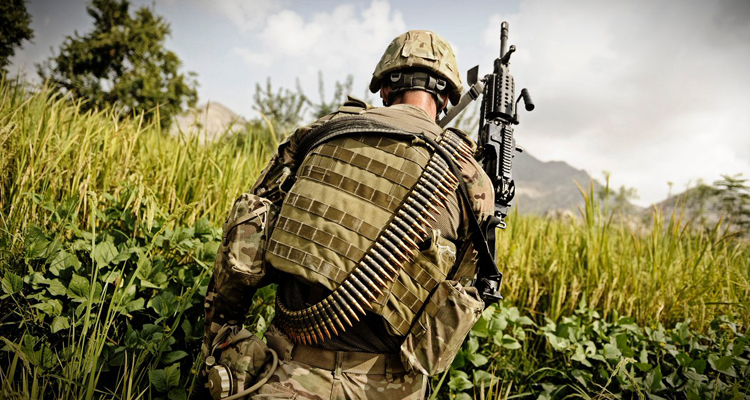
Also from cartridges 7.62×39 mm PS, bullets 57-N-231 with a pointed warhead, steel non-thermostrengthened core in a steel shell, which is clad with tompak, weight - 7.9 g, distance - 10 m, speed - 730 m/s
Grade 4 (Ukraine)/III (Germany)
The vest Class 4 is able to protect against 5.45×39 mm bullets ChP 7N10 with a pointed main part, a steel heat-strengthened core in a steel shell, which is clad with tombak, weight - 3.6 g, distance - 10 m, speed - 910 m/s.
Also from caliber 7.62 × 54 mm (7.62 × 54 R), LPS 57-N-323s bullets with a pointed warhead, non-thermo-strengthened steel core in a steel jacket, weight - 9.6 g, distance - 10 meters, speed - 850 m/s.
German Class III protects against 4g .223 Remington bullets fired at 920 m/s, .308 Winchester 9.55 g bullets fired at 830 m/s.
III (USA)
The armor protection of this class saves from a shot from a 7.62 mm rifle, a 7.62 mm NATO cartridge, in an all-metal shell, at a speed of 830 m/s.
5th grade (Ukraine)
Class 5 armor saves from 7.62 × 39 mm cartridges, BZ (57-BZ-231) armor-piercing flammable bullets with a pointed warhead, a steel heat-strengthened core in a steel sheath, weight - 7.4 g, distance speed - 745 m /s.
Also from 7.62 × 54 mm (7.62 × 54 R), LPS bullets (57-N-323s) with a pointed warhead, non-thermo-strengthened steel core in a steel jacket, weight - 9.6 g, distance - 10 m, speed - 850 m/s.
6th grade (Ukraine)/ IV (USA)
Class 6 body armor protects against caliber 7.62 × 54 mm (7.62 × 54 R), balls B-32 (7-BZ-3, 7-BZ-323) armor-piercing incendiary with a pointed warhead, steel heat-strengthened core, in a steel shell, weight - 10.4 g, distance - 10 m, speed - 860 m/s.
NIJ Class IV Armor protects against 10.8g .30 M2 AP bullets fired at 878 m/s.
IV (Germany)
According to class IV, the armor is resistant to .308 Winchester bullets weighing 9.75 g fired at a speed of 820 m/s.
A few words about the difficult displacement of body armor and possible serious injuries
Individual bulletproof vests are designed to cover the torso, protecting vital organs. When hit by a bullet or shrapnel, the intertwined fibers absorb and dissipate energy over a wide area, reducing the severity of injuries. But no bulletproof vest is capable of completely dissipating the energy of a bullet, especially a large caliber. Its kinetic energy is very high.
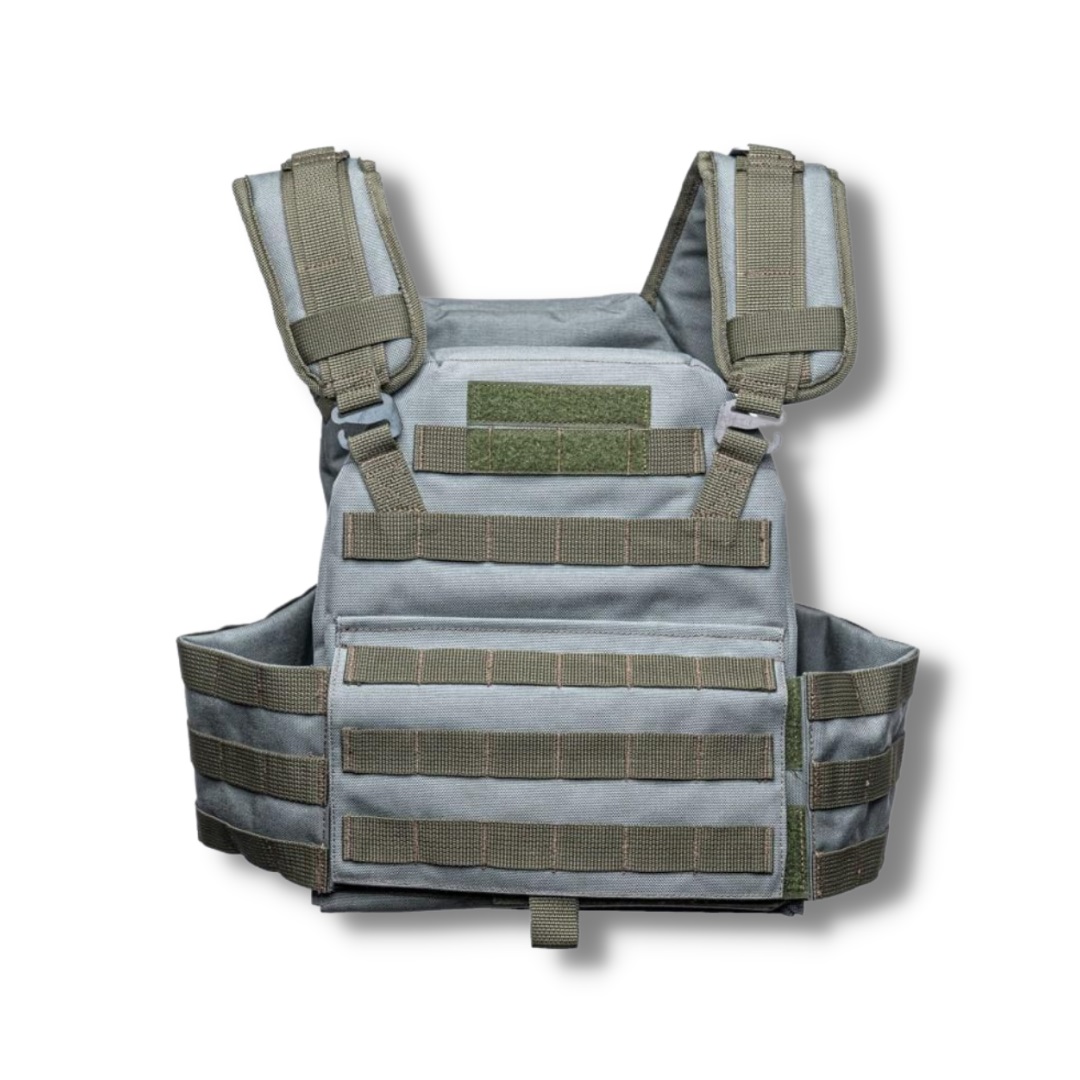
Injuries to the torso can include fractures and even damage to internal organs. The energy of the bullet can cause lacerations and tears, damage to the spinal disc at the point of contact with the vest, the possibility of spinal shock and skin perforation.
Such injuries may not be immediately noticeable, especially if there is no damage to the skin. Injuries can even lead to death if medical care is not provided on time. But not everything is so bad - body armor of the appropriate class increases the chances of survival. The reliability of injury depends on many factors, including the distance of the shot, the angle, mass and speed of the bullet. A shock-absorbing support, which is worn under the armor, will help reduce the risk of injury.
Despite the risk, body armor significantly increases the chances of survival during hostilities. According to NATO experts, body armor reduces the risk of injury by 60%. Today, armor protection is an integral part of the work of law enforcement officers, the military, and security personnel.
Classification of body armor by way of wearing
According to the method of wearing, open vests and models of hidden wear are distinguished. The first can be seen on the military. In the first place here is protection, not appearance and comfort. That is why open vests are quite bulky.
Hidden armor is worn under clothing, so it is much thinner and lighter. The protective qualities of such vests are not so reliable.
Types of protective body armor by type of material
Modern bulletproof vests are made not only from steel or ceramics. Soft armor is made from lightweight and flexible materials.The woven design distributes the force of impact, causing the entire mesh of fibers to absorb energy. The lightweight material is ideal for jobs that require a lot of movement and flexibility.
Soft armor is lighter and more flexible than hard armor, and it's the material and construction that gives it the strength and durability to stop a bullet. It may look like a thick canvas vest, but the materials can be 5-10 times stronger than steel.
Para-aramid fiber has long been the standard for ballistic materials. It provides less deformation and less blunt force trauma. Some of these fibers, such as Kevlar, are made by combining paraphenylenediamine and terephthaloyl chloride to create polyamide yarns, which are then woven into armor plates.
Polyethylene is often referred to as UHMWPE. Polyethylene is one of the most common options on the market. In fact, polyethylene is very similar to plastic shopping bags in a large store, but with a stronger structure and folded many times over. NVMPE is considered a durable thermoplastic that is 5 times stronger than steel. It has also been proven to be 15 times more resistant to abrasion than carbon steel.
Hard Armor is designed for those who expect to take on combat or work in environments where protection is needed not only from pistols, but also from rifles. As the name suggests, hard armor plates, most often ceramic, are used, capable of withstanding most ammunition. They are much thicker and heavier than soft body armor.Ceramic and steel plates are among the most commonly used materials.
Ceramic options include silicon boride and silicon carbide, and they are superior in impact resistance and safety compared to traditional steel plates. You can expect incredible multi-hit protection and significantly reduced weight, plenty of comfort and flexibility.
There are vests like ICW (in conjunction with) where several materials are combined to provide reliable protection.
Body armor is a piece of protective equipment essential to provide life-saving protection against a variety of threats ranging from stabbings, bludgeons and of course bullets fired from firearms.

A potential buyer needs to process a lot of information. You can spend months researching before you know exactly what you are looking for. Sometimes a little guidance can shorten the time it takes to make the right decision by giving you a few simple search criteria.
In order to understand which armor suits your needs best, there are three main factors to consider: weight, protection class and cost.
The National Institute of Justice and the State Standard of Ukraine provide a comprehensive classification that can give buyers an idea of what to expect from armor. The classification divides body armor into different levels of protection. Body armor is selected based on their own needs.
We offer to choose high-quality body armor and plates in our store "Arsenal of the Patriot". On the pages there are plates of different classes, plate carriers and other ammunition.
Author of the review Ulyana Radostina










